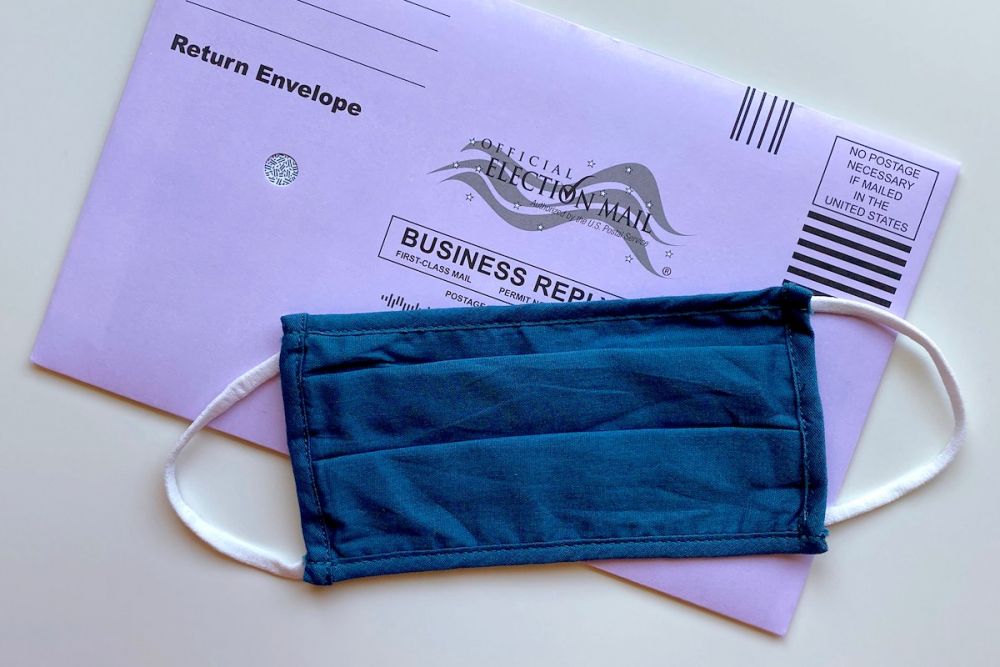Investing, the Pandemic, and the 2020 Presidential Election

The coronavirus is still very much with us. Granted, we are evidently rapidly closing in on a vaccine/vaccine, and let’s hope that translates into vaccinations. Moreover, we are going through a hyper-partisan presidential election, comingled with a pandemic, and an economic downturn, creating an election environment the likes of which none of us have ever experienced.
It may be difficult to do, as investors it is important to take a moment to review what we have learned, or better still, what prudent behaviors have been reinforced since the market panic, that began in February / March 2020, and that came to an end when the S&P 500 Index regained its pre-panic highs in mid-August, 2020. Let us take what we learned from this experience and apply it to what lies ahead.
The Tides and Currents of the Intra-year Declines
In the 41 years since 1979, the average intra-year decline was about 14%. In about half of these years, a decline of more than 10%was experienced, and in around a third of the years had declines of more than 15%. Despite these substantial intra-year drops, the full calendar year returns were positive in 34 years out of the 41 (83 percent). This tells us how common market declines are and how difficult it is to know whether a large intra-year decline will result in negative returns over the entire year. By adhering to a well-thought-out investment plan, investors may be better able to remain calm[1] during periods of short-term uncertainty.
The Day After Election Day[2]
As election results started rolling in on November 8th, 2016 it seemed that with every Trump gain, the markets fell. Overnight Dow futures plunged almost 800 points. Japan’s Nikkei plummeted 5.4%. The Mexican peso – tanked by 11%. Gold, often considered a safe haven in turbulent times, was up over 2%. Then the markets settled. Then they rose. In fact, the S&P 500 rose 1.10% on the 2016 Day After Election Day (“DAED”), and when the markets closed on November 9th, the rise in the S&P 500 marked the fifth-best performance of any DAED in history.
For perspective, the very best performance from a DAED in history was a 1.77% rise in 1980, when Ronald Reagan defeated Jimmy Carter. And the second-best performance goes back 80 years to 1936 when FDR was elected to his second term. The worst DAED performance in history? That would be President Obama’s first win in 2008 when the market nosedived 5.27%. The second worst DAED in history was in 1932 when the market fell 4.42% when FDR was first elected, and the average DAED performance is -0.92%.
What Should an Investor Do?
With these lessons in mind, it’s unwise in the extreme to exit the quality equity investments you’ve been accumulating for your most cherished lifetime financial goals because of the uncertainties surrounding the presidential election. Aside from triggering capital gains taxes, your chances of both getting out (selling) and then back in (buying) advantageously are historically very poor, no matter how smart you think you are. Unless your personal situation has somehow changed overnight, your course of action is do nothing. We know that trying to time the market is a fool’s errand– you will likely sell when the market is rising and buy when the market is falling. You make investment decisions based on your goals and your tolerance for risk, not based on the DAED.
How does one guard against acting on emotions when making investment decisions? Working closely with a financial professional plays an important role in helping investors develop a long-term plan and an investment journey they can stick with.
“We have entered an era in which many millions of people need to make informed savings and investment decisions. The majority should not do so alone.”[3]
At Boerum Hill Financial Advisors we consider a wide range of possible outcomes, both good and bad, when helping an investor establish an asset allocation and plan. Those preparations include the possibility, even the inevitability, of a downturn. When developing investment strategies for clients we focus on what you can control and believe it will lead to a better investment experience, these include:
- Create an investment plan to fit your needs and risk tolerance.
- Structure a portfolio along the dimensions of expected returns.
- Diversify globally.
- Manage expenses, turnover, and taxes.
- Stay disciplined through market dips and swings.
At Boerum Hill Financial Advisors we help you manage your choices and especially in turbulent times. For more information on how we can help you and a free consultation, please contact me at This email address is being protected from spambots. You need JavaScript enabled to view it.
[1] http://www.boerumhillfa.com/resources/blog/item/investment-topics-3-investing-and-emotions-2.html
[2] Sources: www.thewrap.com, www.bespokepremium.com
[3] “Investors and Markets - Portfolio Choices, asset Prices, and Investment Advice.” William F. Sharpe (winner of the 1990 Nobel Prize in Economics), Princeton University Press 2007, pg. 188



